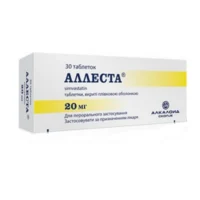Description
Ezonexa (Esomeprazole) Lyophilisate for Injections and Infusions 40 mg Vial №1
Composition:
Each vial contains 40 mg of esomeprazole.
Mechanism of Action:
Ezonexa (esomeprazole) works by inhibiting the proton pump in the gastric parietal cells, thereby reducing acid secretion into the stomach. This mechanism helps in the treatment of acid-related disorders such as gastroesophageal reflux disease (GERD) and peptic ulcers.
Pharmacological Properties:
Clinical trials have demonstrated the efficacy of esomeprazole in providing symptom relief and healing of esophageal lesions caused by acid reflux. Compared to other proton pump inhibitors, esomeprazole has shown superior acid suppression and faster onset of action.
Indications for Use:
Ezonexa is indicated for the treatment of gastroesophageal reflux disease (GERD), erosive esophagitis, and Zollinger-Ellison syndrome.
Contraindications:
Do not use Ezonexa if you are allergic to esomeprazole or similar drugs.
Side Effects:
Common side effects may include headache, nausea, diarrhea, and abdominal pain. Serious side effects such as severe allergic reactions are rare but possible.
Usage Instructions:
The recommended dosage is 40 mg once daily via intravenous infusion over 10-30 minutes. Administer Ezonexa as directed by a healthcare provider. Do not mix with other medications in the same infusion.
Benefits Compared to Analogues:
Studies have shown that esomeprazole is effective in reducing gastric acid secretion and promoting healing of acid-related damage to the esophagus. Compared to other proton pump inhibitors, esomeprazole has demonstrated superior efficacy in acid suppression and faster healing of esophageal lesions.
Suitable Patient Groups:
Ezonexa is suitable for use in adult patients. Dosage adjustments may be necessary for elderly patients or those with impaired renal function. The safety and efficacy of Ezonexa in pediatric patients have not been established.
Storage and Shelf Life:
Store Ezonexa according to the manufacturer’s instructions. Check the expiration date on the packaging and do not use the product after the specified date.
Packaging Description:
Ezonexa is supplied in vials containing 40 mg of esomeprazole for injections and infusions. Each package contains one vial of Ezonexa.





